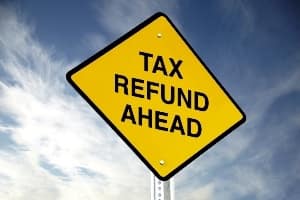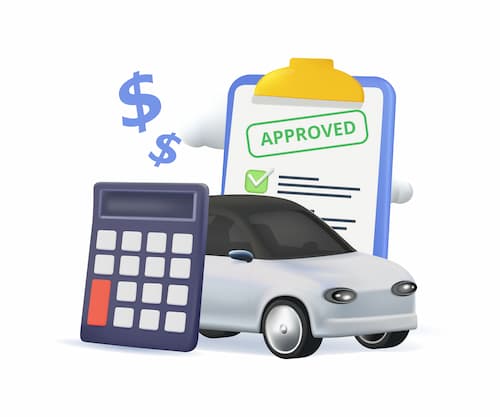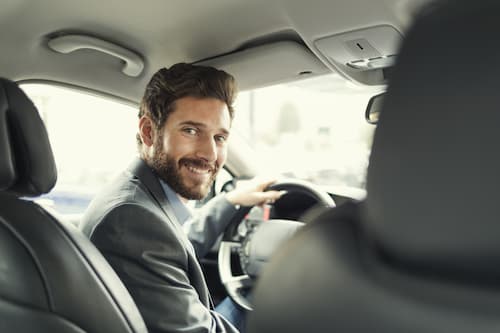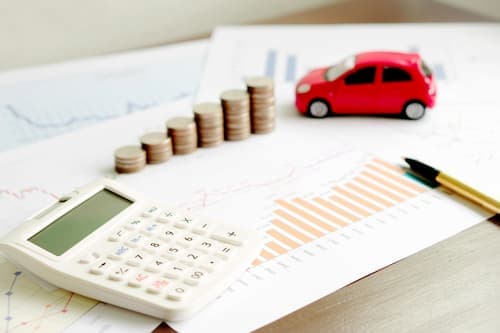Car-related ways to use a tax refund
A tax refund can be used to buy a new car, help afford a leased or used car, or reduce an existing car loan. Here are five approaches to applying a tax refund to a car.
1. Use a tax refund for a car down payment
Applying a strong down payment from a tax refund can work to your advantage when getting a car loan.
A substantial down payment allows you to demonstrate that you have significant "skin" in the game. This can help you get approved for a new car loan and result in a lower loan payment that fits comfortably into your budget.
A large down payment also reduces the likelihood that you’ll be “upside down” during the loan, meaning you owe more than the vehicle is worth when the vehicle's value starts depreciating.
If your tax refund is higher than average, congratulations. You can put more money down on a car and lower your loan payments. If your tax refund is lower than the average, you may still be able to afford a new car.
Depending upon your circumstances, you may prefer to conserve your tax refund if you are comfortable with a higher monthly loan payment, or you may want to use your tax refund to make the largest possible down payment in order to minimize your monthly auto loan payment.
2. Use your tax refund to buy a used car
Using a tax refund to buy a used car won't give you the new-car smell and other benefits of owning a new car, but it can save you a lot of money. If you shop wisely, you can avoid a used car loan and pay for the car outright with your tax refund. If you also have some savings, you can purchase a newer car with fewer miles.
Finding a good, used car for $3,000 or so may be difficult, but it's possible. Take time to research available cars and wait until a great value car purchase becomes available.
3. Spend a tax refund on leasing a new car
Your tax refund can be used to help you lease a new car. Leasing can help you get into a higher priced car than you might otherwise be able to afford, with a lower monthly payments and the ability to return the car after a two or three years.
Low monthly payments are often desirable. Some leases can be extended on a month-to-month basis at the end of their term. Check with your leasing company to determine if this option is available.
While a lease may appeal to someone who values low monthly payments, purchasing a car can be the preferred option for the buyer who wants to own a car beyond the term of a lease.
If you decide to lease, consider purchasing gap auto insurance because your car may depreciate in value and be worth less than what you owe on it. If you're in an accident, this covers the difference between the current market value of your car that your insurance company should pay, and the amount you owe your finance company.
4. Use a tax refund to reduce or pay off your existing auto loan
Knocking down debts is often a priority when people don’t know what to do with their tax refund. Applying a tax refund to an existing car loan should reduce the amount of interest paid over time, and making an extra payment toward principal should help pay off the loan more rapidly than originally planned.
For example, making a one-time payment of $3,000 on an existing $15,000 car loan is like making a year's worth of payments at once and can mean paying off your loan a year earlier. Ask your lender about the best way to do this.
If you only have a small amount left on your loan, you could use a refund to pay it off entirely and be free of the payment.
5. Buy better auto insurance with your tax refund
Before you can drive away from the dealer lot with your newly purchased car, you typically have to prove to the dealership that you have at least minimally-required car insurance.
This is a time to consider your full insurance needs and apply a portion of your tax refund toward upgrading your existing coverage. If you didn’t purchase comprehensive and collision auto insurance before, find out about the cost to add it now. Improving your insurance coverage may be possible for only a few hundred dollars, leaving the bulk of your tax refund available for other uses.
The type of car you drive is one of many factors that auto insurance companies consider when setting rates. Insurers look at how safe your car is, how much it costs to repair or replace and how likely it is to get stolen, among other things.
Auto insurance companies also commonly offer a discount when you pay your full-term premium upfront. Your tax refund, used to pay 6 months or a year's worth of insurance, could mean a reduced premium.
How to spend your tax refund on a car
Your tax refund can be an important component in buying or leasing a vehicle, or protecting it through an extended warranty or via robust insurance coverage. If your tax refund is sizeable, you may be able to apply it to more than one car-related purchase, such as making a down payment on a new car and compare auto insurance quotes to buy the best coverage for it.
Whether buying a new or used car, or leasing a vehicle, it’s important to shop for your car insurance as you shop for the car. A leased vehicle will require higher liability limits (100/300/50), and both a leased and financed vehicle will necessitate that you carry physical damage coverages, such as comprehensive and collision insurance. If you’re used to a bare bones policy on an older car, your car insurance rates will be considerably higher. Even if you already have comparable coverages on your existing auto policy, the car you’re purchasing may cost more to insure. The type of car, its safety and claims record, repair costs and value are all taken into account by car insurance companies, and affect your rates.
If you shop for car insurance while you shop for your car, it may help you narrow down the vehicle that you choose (based on how much insurance costs for each car you evaluate). Avoid surprises when it comes to your premium amount. Be sure you can afford both the car and insurance payment before you commit to a car.




